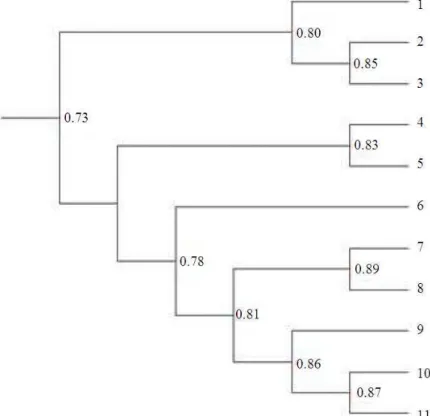Discrimination Capacity of RAPD, ISSR and SSR Markers and of their Effectiveness in Establishing Genetic Relationship and Diversity among Egyptian and Saudi Wheat Cultivars
Texto
Imagem




Documentos relacionados
Motivado pelo papel de destaque da pes- quisa agrícola na produção de soja no Paraná, este trabalho propõe-se a analisar o processo de difusão tecnológica de novas cultivares
EST analysis re- vealed considerable genetic variability among the Turkish wheat cultivars resistant and susceptible to yellow rust disease and allowed calculation of the mean
NATURAL OCCURRENCE OF NIVALENOL AND MYCOTOXIGENIC POTENTIAL OF FUSARIUM GRAMINEARUM STRAINS IN WHEAT AFFECTED BY HEAD BLIGHT IN
The purpose of this study was to evaluate the genetic diversity in 16 potato cultivars that are being made available to potato growers in Brazil, and to develop a molecular
Thirteen Egyptian bread wheat cultivars common in Egypt obtained from the National Wheat Program, Crop Research Institute, ARC, Giza (Table 1) and twenty-one powdery mildew
Although considerable amount of information concerning leaf photosynthetic rate and transpiration, stomatal frequency and other morphological and physiological properties of wheat
MASHININI & DUTTON (2007) evaluated wheat grain and wheat- based products in South Africa, and reported the occurrence of FB 1 in 2% samples of wheat-based products
The aim of this study was to characterize 1 common wheat cultivar (BH 1146) and 4 durum wheat genotypes (IAC 1003, Langdon, P19 and P33) from the breeding program of the
